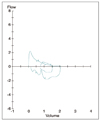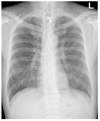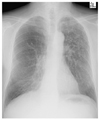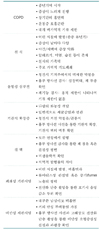Clinical History and Diagnosis of Chronic Obstructive Pulmonary Disease
Article information
Abstract
Patients with COPD typically present when they are older than 50 years of age, and about 80% of them are male. Clinically the patients with COPD present with cough, sputum, and dyspnea that are gradually progressive over years. Other symptoms are wheezing, hemoptysis, and chest tightness. In many patients with COPD, physical examination reveals no significant findings especially during quiet breathing. As the disease becomes more severe, patients demonstrate more apparent physical signs. The assessment of the lung function is essential to establish the diagnosis and to determine the severity of COPD. The spirometry is the most important test for diagnosing and staging COPD. Office spirometry is a feasible testing strategy to diagnose patients with the early stage of COPD and may be used to encourage smoking cessation. The Global Initiative for Chronic Obstructive Pulmonary Disease (GOLD) recommends to define the severity of COPD and a stepwise approach for the management of COPD.







